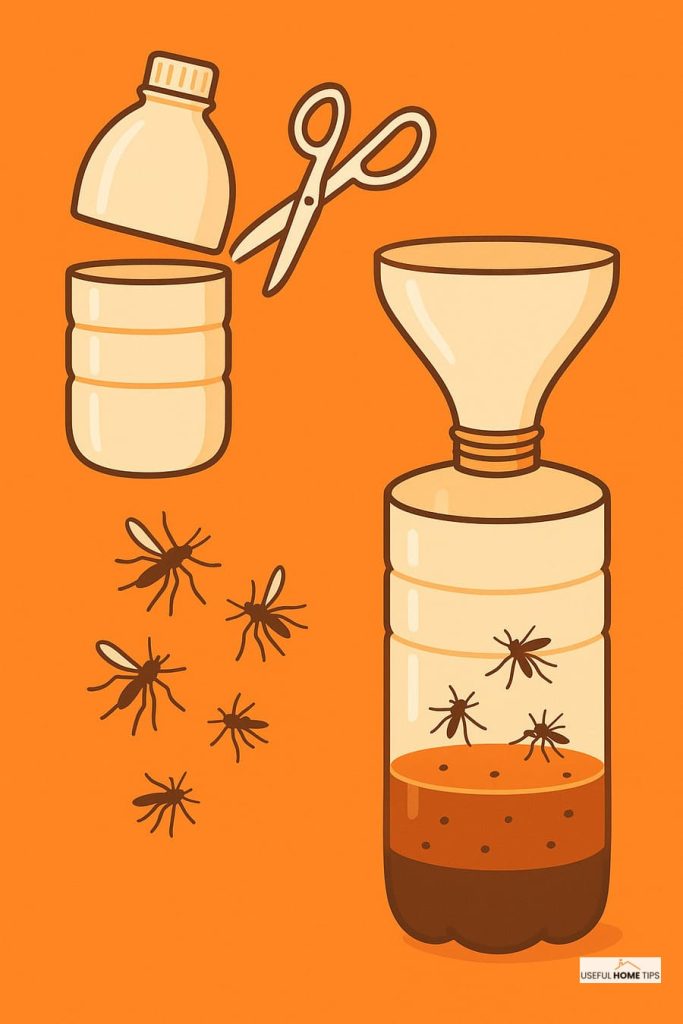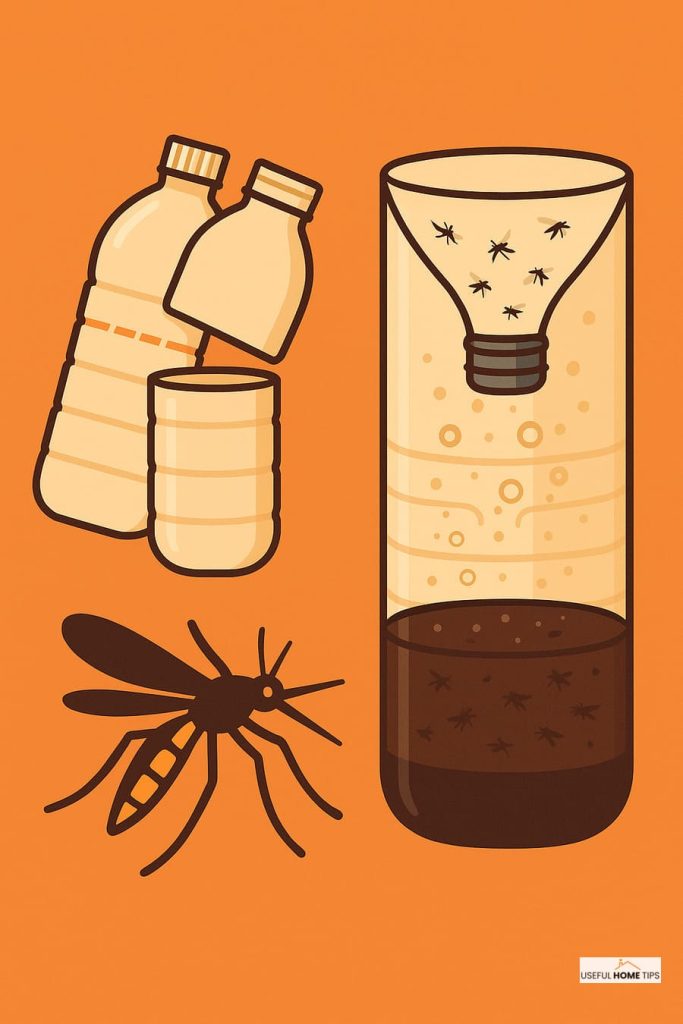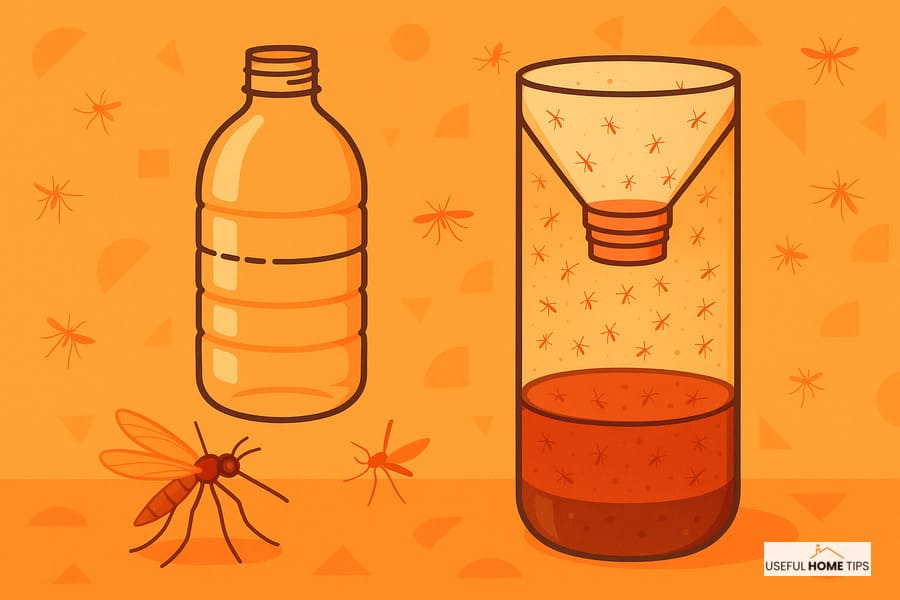If there is anything that can ruin backyard barbecues, evening porch chats, or lazy afternoons more than the buzz and bites of mosquitoes, I want to know what it is. If you are ready to stop slapping yourself silly or soaking your body in harmful chemicals, you have come to the right place.
This article is going to show you how to create a simple, environmentally-friendly DIY mosquito trap using common household items you probably already have laying around, no crazy contraptions or overpriced sprays needed. By the time you finish the article, you will have a perfect mosquito trap and the ability to enjoy still evenings once again.
Shopping List (100% Supermarket-Approved)
Before we get to the fun part, let’s ‘pick up’ our materials. You can find everything on the list below at any supermarket:
- 1 plastic bottle (empty)
- 50 g of brown sugar (mosquitoes love sugar, and so do you).
- 1 g of baker’s yeast (the same stuff you use for bread, but now it’s going to attract mosquitoes).
- Water (200 ml)
- Scissors or a knife (to cut the bottle).
Step-by-Step Guide

First of all, prepare the sugar solution, then add the yeast to make a constant supply of CO₂. You will then connect the two pieces of the bottle to create your funnel-and-reservoir configuration. Lastly, you will need to properly place your trap in mosquit-hot zones to catch more mosquitoes.
1. Cut the Bottle and Make a Funnel
Cut the bottle in two parts. Carefully carve with your scissors or knife to cut around the “shoulders” of the bottle where it separates top third from the bottom two-thirds. If you’d like to get a cleaner cut, draw a line with permanent marker and then cut that line.
For making the funnel, take the top half (that has the cap) and remove the cap. Now, invert the funnel and put it into the bottom half so it fits snugly. This is how the funnel works, so bugs like mosquitoes will crawl or fly into it, but it is difficult for them to escape.
2. Magic Syrup Preparation
Take 200 ml water and 50 g brown sugar and add it in a pan. Heat until the sugar has completely dissolved and the water boils. This gives you a sweet solution that mosquitoes can’t resist. Turn off the heat and let the syrup cool to about 30 °C (warm like the cuddle of a bath, not hot like molten lava). Once the syrup has cooled to that ideal temperature, stir in 1 g (about ¼ teaspoon) of baker’s yeast. Mix it gently.
3. Trap Assembly
Carefully pour the cooled, yeast syrup into the bottom half of the bottle. Try to fill about one-third, so the mosquitoes have enough room to swim and drown in the mixture. Take the inverted top half of the bottle (without the cap) and place it level with the bottom half, so it is a funnel into the syrup.
Use a tape or a rubber band to secure this. This will ensure curious ants (or other critters) do not scoop out your mixture. With the two half bottles, ensure they are both snug to create a seal with no gaps. If you want to be extra , you could label or decorate the trap so everyone in your abode knows exactly what it is, and that it isn’t a funky science fair project gone wrong.
4. Choose the Right Location for its Placement
Put your trap in oddly preferred areas of mosquitoes: under eaves, near windows, patios, and around potted plants. They also enjoy humid spots like bathrooms or laundry rooms, just avoid these areas in direct sunlight that dry the mixture too quickly. Ensure the trap is positioned away from children and pets. While under 10 percent of the total mixture is unlikely to harm a human or animal, curious hands can easily knock the trap over.
Additional Tips and Suggestions
As with any one of these traps, small tweaks can maximize the effectiveness of your trap anytime. The following suggestions will help you optimize your trap’s performance and avoid common mistakes, guiding you in navigating the challenge of trapping buzzing bloodsuckers.
- Exchange the Syrup (Every 2 Weeks): Yeast fermentation gradually slows, and the mixture may begin smelling like sour wine. Exchanging it every two weeks means you have consistent CO₂ production and a new bait.
- Night Mode: Mosquitoes are mainly nocturnal. Turn your trap on at dusk, which is when mosquitoes will be on the hunt. This means when you chill out on your patio with your rosé, they are headed for their demise instead.
- Be Green: When you can no longer make use of the trap, recycle the plastic bottle. If you’re a composter then shovel any extra yeast-sugar sludge into the compost bin, the microbes and worms love it.
- Sweeten the deal: Add a splash of fruit juice (apple, mango, or just a little honey) to the sugar solution before the yeast. This will add an aromatic extra lure that some mosquitoes are attracted to.
What Makes it Work?

For those interested in the science behind our DIY mosquito trap, here’s a detailed breakdown.
- Sugar = Delicious Attraction: Mosquitoes eat nectar and other plant juices. Therefore, a sugar syrup mimics a mosquito’s primary food source.
- Yeast = CO₂ Maker: Fermentation produces carbon dioxide, and mosquitoes can use the same gas to find you by tracking the exhalation of the CO₂. Your trap provides the illusion that a human guest is nearby. When they come close, they fall down the funnel (accidentally) and can’t find the narrow exit to escape.
- Funnel = One-Way Street: The inverted top half provides a point of entry in which mosquitoes can slip inside, but the steep walls and tall height make it almost impossible for them to climb up and fly back out.
Final Word
For no money and just a few ingredients around the house, you can make a very simple and really efficient DIY mosquito trap, repelling mosquitoes constantly, no matter what. No DEET bath and no toxic candles. It’s simple, smart, and surprisingly effective. Just set it up before dusk, change the syrup every few weeks, and you will notice the decrease in bites, buzzing, and more time enjoying your space.
Keep in mind that if your trap is too effective, you may catch a few pests that are nothing but harmless. Just do not catch your pollinators by placing the trap away from any flowering plants and keep the mixture to a reasonable level of sweetness. Feel free to share this post with your friends and family as well.

Numrah Fareed is a freelance writer and home organization enthusiast with a passion for practical, eco-friendly living. When not typing away at her desk, she’s experimenting with DIY cleaning hacks and helping readers simplify their routines one tip at a time.
